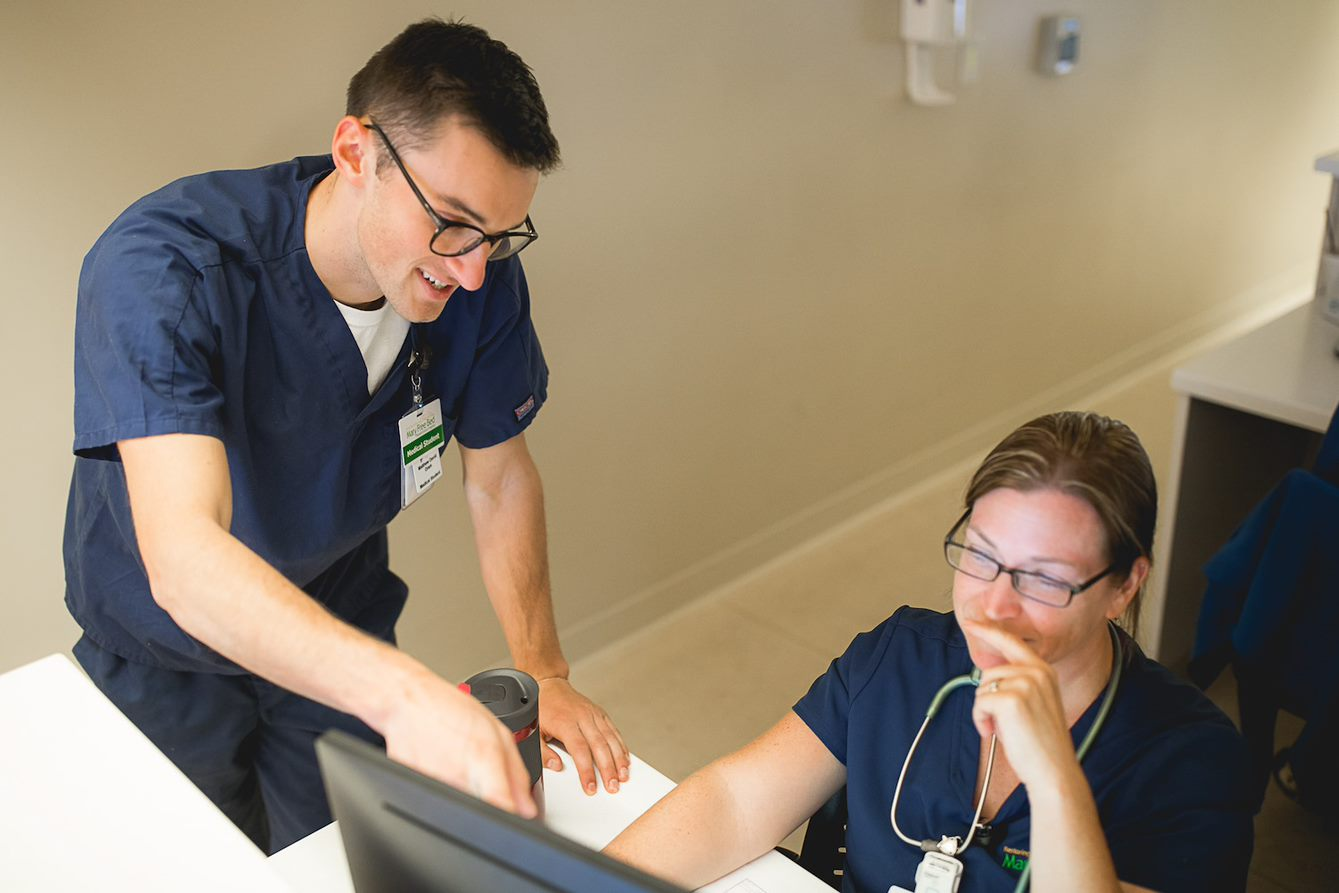Medical Student Education
 Mary Free Bed offers a four-week elective rotation for third- and fourth-year medical students interested in physical medicine and rehabilitation. Offered through Michigan State University College of Human Medicine Grand Rapids Campus, the rotation takes place at our main campus in Grand Rapids. This four-week experience is a terrific opportunity to explore physiatry in a host of inpatient and outpatient clinical practice settings.
Mary Free Bed offers a four-week elective rotation for third- and fourth-year medical students interested in physical medicine and rehabilitation. Offered through Michigan State University College of Human Medicine Grand Rapids Campus, the rotation takes place at our main campus in Grand Rapids. This four-week experience is a terrific opportunity to explore physiatry in a host of inpatient and outpatient clinical practice settings.
You’ll work alongside our residents to learn about our programs and services in greater depth. Faculty with a special interest in medical education will involve you in patient care and teaching sessions.
By taking a deeper dive into PM&R, you’ll be exposed to the nuances of rehabilitative care and Mary Free Bed’s broad range of specialty services. We provide experience in all clinical areas, including spine and musculoskeletal care, and rehabilitation for spinal cord injury, brain injury, stroke, cancer and pediatric patients. Other programs include amputation care, cardiopulmonary rehabilitation and spasticity management.
You’ll observe our residents’ daily workflow, participate in didactics and other learning opportunities. You’ll be able to ask specific questions about our residency program as you consider where to apply.
Two medical students are accepted per four-week block. To apply for an elective rotation at Mary Free Bed, click here: Visiting Student Learning Opportunities (VSLO).
- International students should complete the application form and return it to the Student Onboarding Team, by emailing StudentOnboarding@maryfreebed.com.
- Please be advised that Mary Free Bed is unable to sponsor visas for visiting international medical students.
- Shorter-duration shadowing experiences are subject to availability and limited to three student matches per schedule block. Spots are filled on a first-come, first-served basis. Email the Student Onboarding Team, at StudentOnboarding@maryfreebed.com.
-
To view the block dates schedule click here.
For more information, email StudentOnboarding@maryfreebed.com
How do I learn more about PM&R?
If you’re in your first or second year of medical school, it’s not too early to learn more about physical medicine and rehabilitation and begin building a portfolio that highlights your work and journey to the field. If you’re in your third year or even beginning your fourth, it isn’t too late!
Anatomy: A strong knowledge in musculoskeletal anatomy and neuroanatomy is essential to success as a physiatry resident. You will be well-served to be as familiar with anatomy during medical school as you can. You’ll have more opportunities to brush up during residency, but the more you can learn now, the easier it will be in the future. Pay special attention to upper- and lower-extremity muscles, their innervation, and the nerve root(s) that innervate them. Knowing the innervation of an individual muscle is critical when performing electrodiagnostic tests, such as an EMG.
Clinical experiences/Observing: If you can get experience in a PM&R clinic, it will be to your advantage. You’ll meet patients and learn their primary concerns, common diagnostic tests and the physical examination skills physiatrists use for evaluation and treatment. Additionally, it demonstrates a clear commitment to the specialty when completing your residency application and provides exposure to physiatrists who may be able to write Letters of Recommendation in support of your application.
Professional organizations: The Association of Academic Physiatrists (AAP) and the American Academy of Physical Medicine & Rehabilitation (AAPM&R) hold annual assemblies and offer special programming for medical students. If you can attend either (or both) of these conferences, you’ll get some excellent learning opportunities and the chance to meet program leaders from across the country. The organizations’ websites also contain information about the field and ways to be more engaged with the specialty as a medical student.
Clinical rotations/Electives: Some medical schools include physiatry as a part of their core clerkships (often during neurology or internal medicine rotations). Many schools also offer electives for third- or fourth-year medical students with their local departments/residency programs. If your medical school does not have a PM&R department, don’t worry. PM&R electives are available to visiting medical students at various hospitals, including ours.


